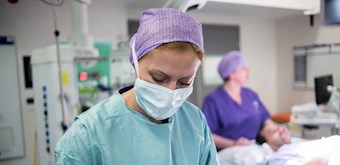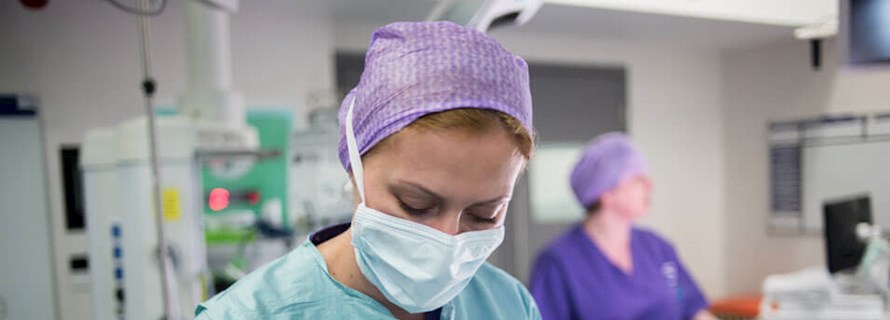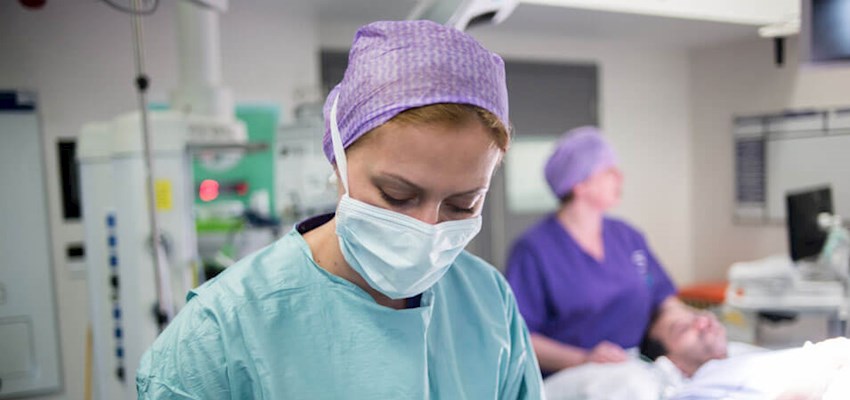Femoral hernia repair
Surgery to repair a hernia at the top of your thigh
If you have a lump pushing through the top of your inner thigh, it may be a femoral hernia. HCA UK's experts can help.
What is a femoral hernia?
It appears as a lump or swelling at the top of your inner thigh. Surgery is an effective treatment option to remove a femoral hernia.
Need to know
-
What happens during surgery? icon plus
Femoral hernia repair can be carried out in two ways:
- open surgery
- laparoscopic (keyhole) surgery
If your consultant opts for open surgery, a single cut is made in your lower abdomen and the femoral canal (channel containing blood vessels and nerves leading to the thigh) is opened. The tissue or loop of bowel is pushed back into your abdomen. The femoral canal is then closed, often with a synthetic mesh, to repair the weak spot.
During keyhole surgery, several small cuts are made and a camera inserted so your consultant can see inside. Instruments are used to pull the hernia back into place. A synthetic mesh may be used to strengthen the area. -
How to prepare icon plus
Your GP or consultant will examine the affected area and may refer you for an ultrasound scan. This is a painless, non-invasive test to confirm the diagnosis.
Before recommending surgery, your consultant is likely to consider:- risk of strangulation (if the hernia contains parts of your bowel)
- if symptoms are getting worse
- the effect it is having on your daily life
You will be admitted on the day of surgery unless there are any reasons which may require you to be admitted the day before.
Your consultant will tell you how to prepare for your operation. They will talk you through the risks and side effects involved and answer any questions. -
After surgery icon plus
Femoral hernia repair is a routine procedure with few risks.
You may experience some bruising, swelling and discomfort after the procedure. Painkillers (either injections or tablets) should help with this in the first 24-48 hours after surgery.
You should be able to go home on the same day or the following day. It is important to follow your consultant’s instructions. This includes eating plenty of fibre and drinking lots of fluids to avoid straining when you go to the toilet.
You should make a full recovery after your procedure within about six weeks. Some people are able to return to light activity and driving within about two weeks.
Our surgeons




Our locations
From complex hernia surgery to diagnostic tests and procedures, we provide exceptional surgical care across our network of hospitals, outpatient centres and specialist clinics.
Book an appointment
Our team can help with any enquiries or you can make an appointment with one of our experienced consultants.
Call us today
020 7079 4344